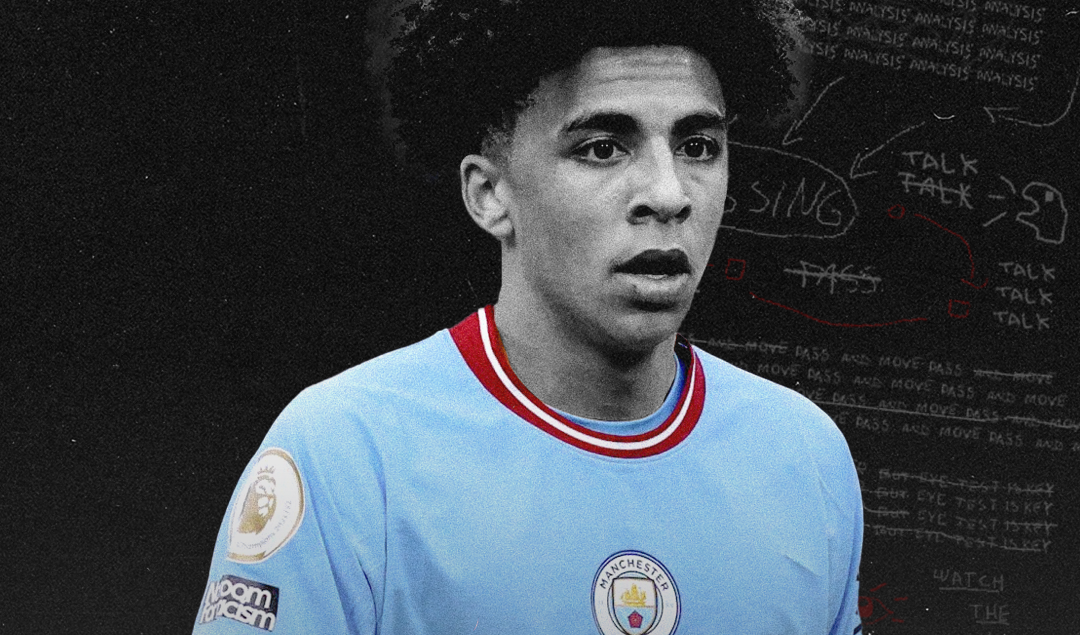Liverpool vs City: Arne Slot’s Tactical Masterclass on Both Sides of the Ball
Following what was arguably their best performance of the season, Liverpool now find themselves in a commanding position: nine points clear of second-place Arsenal and eleven ahead of Manchester City. The Reds hosted Pep Guardiola’s side at Anfield, allowing City their first shot in the game after 39 minutes. Remarkably, this marked City’s longest wait for a shot in a league match in 14 years. This can only be proof of the Reds outstanding display.
Line-ups:
With every passing game, it becomes clear that under Arne Slot, there are no “bench” players—only players ready to step up when called upon. Whether certain players start or remain on the sidelines is no longer a surprise; each choice is tailored to the demands of that specific game.
For this match, Liverpool lined up with Caoimhín Kelleher in goal with Alisson still unavailable for selection. The backline featured Andrew Robertson, Virgil van Dijk, Trent Alexander-Arnold, and Joe Gomez, who replaced the injured Ibrahima Konaté.
In midfield, Ryan Gravenberch, Alexis Mac Allister, and Dominik Szoboszlai provided the perfect balance of energy, creativity, and control. Up front, Cody Gakpo, Luis Díaz, and Mohamed Salah formed the attacking trio with Darwin Nunez returning to the bench.
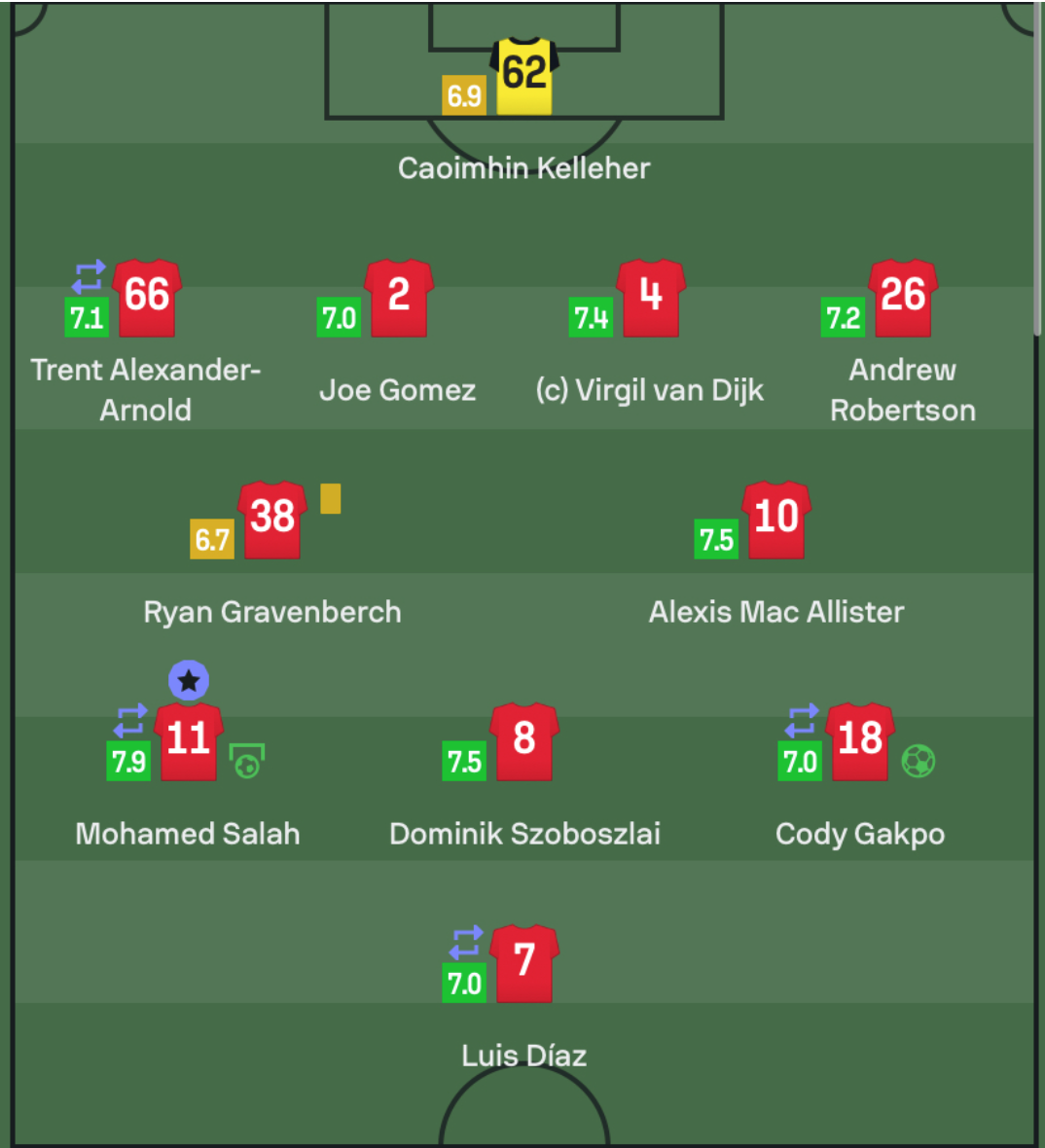
Photo: Sofascore
In Possession:
Unleashing the “Catapult”:
Recently, @Kumaran_rohit3 highlighted City’s vulnerabilities in his tactical preview of the game. These weaknesses mainly came in the Citizens lack of compactness and struggled to defend long balls in wide areas and behind their high defensive line. These issues were clear as day in City’s game against Brighton and Tottenham Hotspur.
Watching Liverpool take on Manchester City, it was clear that Arne Slot had devised a game plan tailored to exploit the weaknesses in Guardiola’s setup. From the very first whistle, Liverpool aimed to bypass City’s pressing lines and expose their vulnerabilities in the wide areas and high defensive line through well-placed long balls.
Take this sequence as an example. Kelleher opted to go long from his area, and while Akanji won the initial aerial duel, Liverpool had already set themselves up in central areas with players in position to contest the second ball. Notably, Trent Alexander-Arnold had tucked into midfield, creating a numerical advantage for Liverpool in these central spaces. This allowed the Reds to dominate the battle for second balls, and in this case, they came out on top.
From there, a switch of play allowed both Salah and Alexander-Arnold to attack Nathan Aké, capitalizing on the numerical superiority Slot’s system had created in these zones. And it didn’t stop there—Liverpool’s midfielders, along with Cody Gakpo on the far left, pushed up aggressively to overload City’s defensive line.
Fortunately for Liverpool, one player with the vision and precision to break through City’s defensive lines returned just in time for this crucial fixture: Trent Alexander-Arnold!
The right-back’s ability to execute long passes to runners behind City’s high defensive line proved to be a decisive weapon. The question was, will he be able to slot in the right positions to deliver those defense breaking passes?
Take this instance, for example. From deep in Liverpool’s defensive third, Trent launched a perfectly weighted long ball that put Salah and Díaz in a dangerous 2v2 situation against City’s defenders.
However, Trent’s influence didn’t stop there. His passing wasn’t just a way to bypass City’s press—it was instrumental in breaking the deadlock.
As Liverpool won the ball back after Van Dijk struck the post with his header, you can see Trent was forming the back three-rest defense line, slotting in at LCB alongside Robertson and Gravenberch.
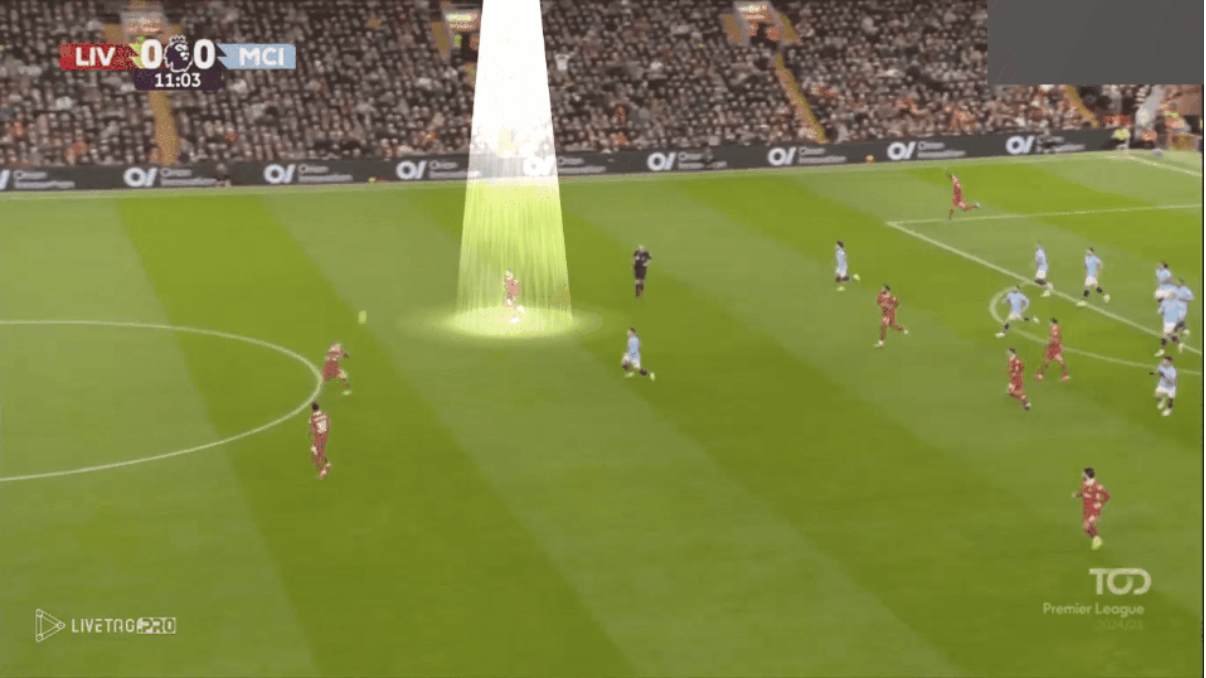
While Gravenberch and Gomez rotated back into their usual roles, Trent remained more central, with Szoboszlai temporarily shifting out to cover the right-back position.
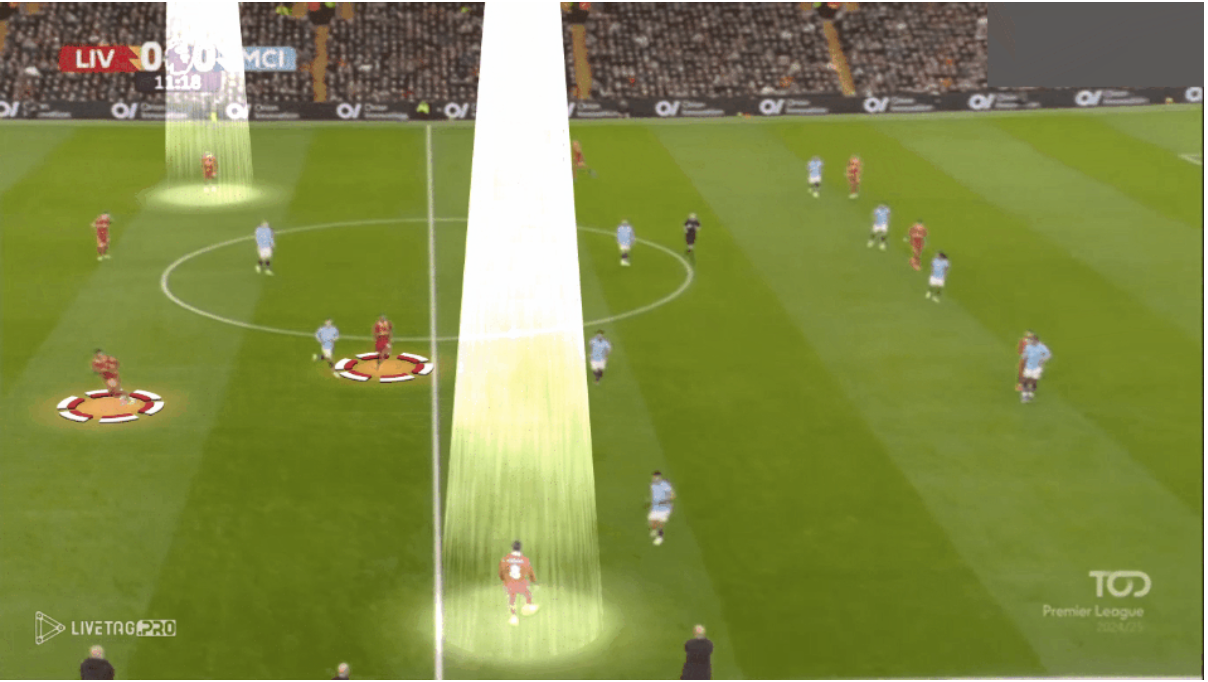
This positioning appeared to be intentional—designed to give Trent better angles to receive the ball and execute his trademark long passes.
By staying central, Trent could open his body to play forward more effectively, creating a sense of unpredictability. And it was in this exact moment of hesitation that Trent struck as he launched a pinpoint long ball without even looking, fully aware that Salah was already making a run into the space behind City’s high line.
From there, Salah found himself in a 1v1 situation. And with Gakpo making a clever run to the back post, the Egyptian King delivered a pinpoint cross, allowing the Dutchman to tap it in and open the scoring. From another angle, you can see how instantly Salah recognized Trent’s intent, anticipating that direct ball before anyone else on the pitch.
Going Long is Not the Only Option:
Based on the analysis so far, one might assume that Liverpool simply relied on long balls from deep to bypass City’s press. In reality, however, that was far from the case. While those long passes were a crucial aspect of Liverpool’s approach, Arne Slot introduced another layer of tactical nuance that allowed the Reds to mix up their play and keep City guessing.
Shaping up in their familiar 4-2-4 structure, Slot made a subtle yet effective tweak in midfield. While Ryan Gravenberch was as usual the player dropping deep more frequently to receive the ball and dictate play, there were moments where he rotated positions with Dominik Szoboszlai.
At these times, Szoboszlai would drop deeper into midfield to combine quickly, enabling Liverpool to execute the “up, back, and through” passing pattern—a sequence designed to slice through City’s defensive block with speed.
This fluidity in midfield not only disrupted City’s defensive shape but also gave Liverpool greater control over transitions, creating a balance between direct play and slow build-up.
Overall, it was close to a perfect performance on the ball from the Reds in the first half. We dominated with 58% possession, completed 223 passes, and registered an impressive 1.58 xG all while limiting City to a single shot. However, Arne Slot’s side’s brilliance was not limited to their in-possession qualities.
Out Of Possession:
Suffocating the Cityzens:
On the defensive side, the Reds successfully nullified City’s 3-2 narrow build-up shape. The discourse on social media has always been that Arne Slot’s out-of-possession approach of mixing a 4-2-4 defensive setup with a passive press will be a disaster when facing top side. Thankfully for the Reds, that wasn’t the case here.
Liverpool’s pressing was much more aggressive than in previous games, especially in the first half. For context, the Reds have averaged a pressing intensity of 13 seconds this season (time taken to disrupt a possession chain by defensive actions). But in this match, that number dropped to just 11.6 seconds!
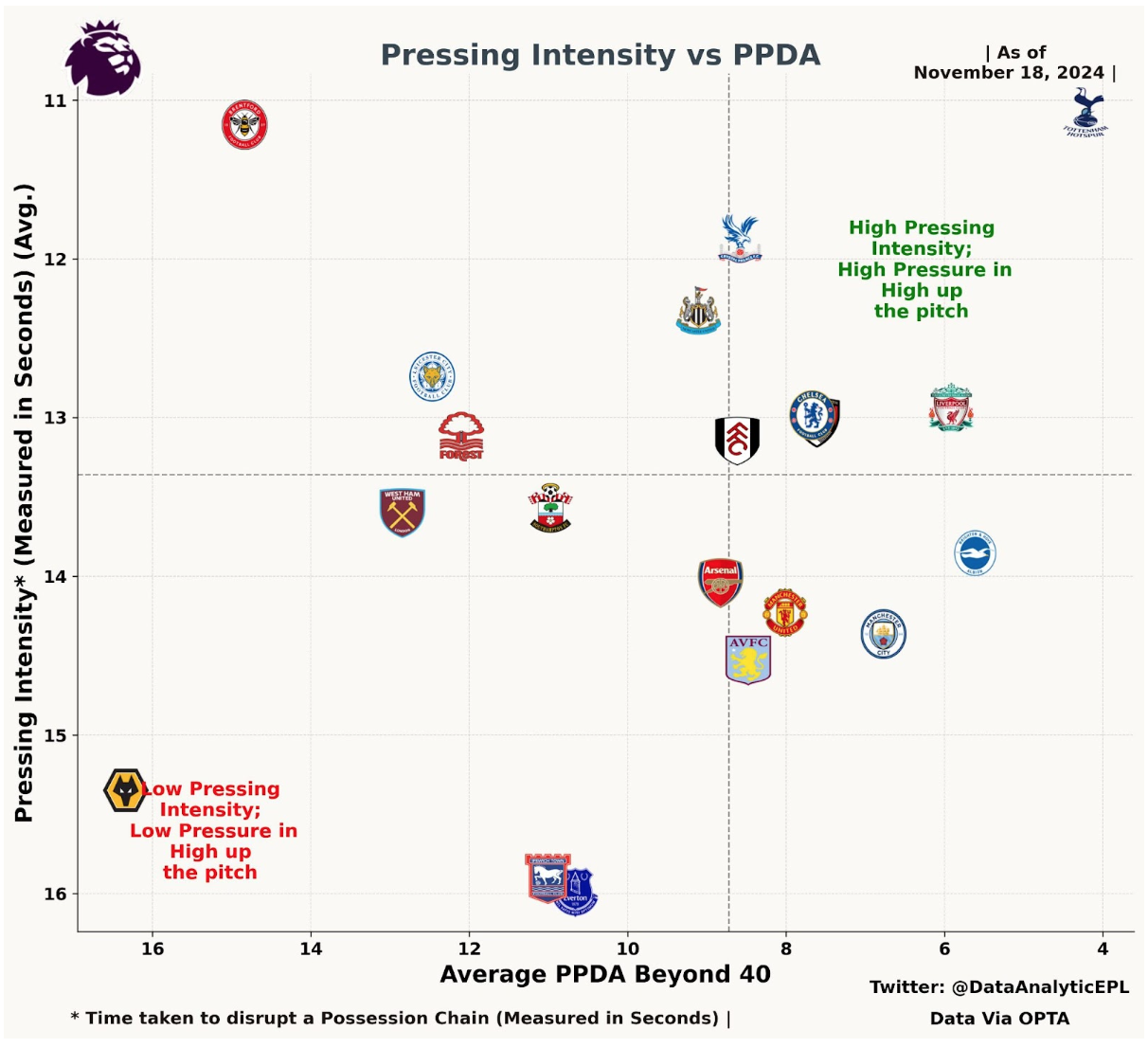
Photo: @DataAnalyticEPL
This approach was exactly how Liverpool managed to suffocate Manchester City, making them visibly uncomfortable in possession. Let’s break it down further.
Operating primarily in their usual 4-2-4 shape—though it occasionally morphed into a 4-2-3-1—Liverpool focused on blocking City’s central passing lanes, cutting off access to their pivots. Both Alexis Mac Allister and Ryan Gravenberch pushed high up the pitch to tightly mark City’s central midfielders, disrupting their rhythm and forcing them into errors.
In the front line, Cody Gakpo and Mohamed Salah acted as pressing triggers, aggressively closing down the wide players whenever they received the ball. Meanwhile, Luis Díaz took up a more central role in the press, ensuring no easy outlets for City through the middle. This relentless pressure often forced Guardiola’s side to go long, abandoning their usual intricate build-up.
Even then, Liverpool were prepared. With the midfielders covering ground quickly and Van Dijk stepping out of the defensive line when needed to challenge for aerial balls, City found it extremely difficult to bypass Liverpool’s compact shape.
Even when City attempted to play around Liverpool’s block, the intensity and coordination of Liverpool’s press effectively closed down passing lanes and shrank the pitch. The follow-up of the press by the fullback was also an important point in pinning City in their own areas. At times, Liverpool pressed with four, and even five, players, suffocating City’s options and forcing them into rushed decisions.
A Back Six at Anfield?
When Manchester City managed to progress the ball or win it high up the pitch, they struggled to create meaningful chances while trying to sustain pressure in Liverpool’s defensive third. This was largely due to the defensive contributions of both Ryan Gravenberch and Alexis Mac Allister, who tracked runners tirelessly and even dropped into the defensive line when needed, effectively forming a back five—or at times, even a back six.
This compact defensive shape ensured that City’s attempts to overload the box or create space for Erling Haaland were nullified. For instance, when someone like Rico Lewis made a late run into the box to drag defenders out of position and open space for Haaland, Liverpool’s discipline held firm. With Gravenberch and Mac Allister covering those off-ball movements, Virgil van Dijk could stay laser-focused on shadowing Haaland, consistently intercepting passes or clearing dangerous crosses before they reached the Norwegian striker.
A “Bald” Move:
In the second half, Arne Slot made a “bold” tactical adjustment to maintain Liverpool’s defensive solidity while allowing both Alexis Mac Allister and Ryan Gravenberch to stay tight on their midfield markers without vacating the central spaces. It was an extremely risky approach, but it proved to be effective.
Take this sequence, for example. Both Gravenberch and Mac Allister were dragged toward City’s left-hand side, leaving central areas seemingly exposed.
This created a potential opportunity for Rico Lewis, who had positioned himself in the middle of the pitch with acres of space to receive the ball. However, Lewis was marked out of the game through intelligent defensive work.
Cody Gakpo provided shadow coverage, positioning himself to block passing lanes into Lewis. This meant that even if City attempted to play him in from their right-hand side, he’d immediately find himself under pressure from the Dutchman. Simultaneously, Andrew Robertson marked Lewis closely from behind, cutting off any opportunity for him to turn or receive comfortably in central areas.
In this following sequence, you can even see Andrew Robertson fully commit to following Rico Lewis into central areas, leaving the left-back position completely vacant. Yet, Liverpool’s defensive structure remained intact thanks to Cody Gakpo’s awareness and work rate. Gakpo seamlessly rotated into the left-back role, tracking Kyle Walker’s overlapping runs along the touchline and ensuring there were no gaps for City to exploit.
Despite City dominating possession in the second half, holding 66% of the ball, it was Liverpool who posed the greater threat. The Reds continued to unsettle City’s backline with a mix of long balls aimed at exploiting their high line and intricate, quick passing sequences through the middle.
It was a tale of two halves: dominance with the ball in the first and an equally impressive defensive display without it in the second. This was as complete a performance as you could ask for and further proof that Arne Slot’s Liverpool are more than deserving of their place at the top of the league.
Whether the Dutch manager will achieve the unthinkable in his first season remains to be seen, but one thing is certain: the Anfield faithful couldn’t have asked for a better start to life in the post-Klopp era. Arne Slot has not only built on and improved the squad he inherited, but he also set the stage for what could be a truly historic campaign.
By: Mohamed Fathalli / @FathalliMohamed
Featured Image: @GabFoligno / Martin Rickett – PA Images
